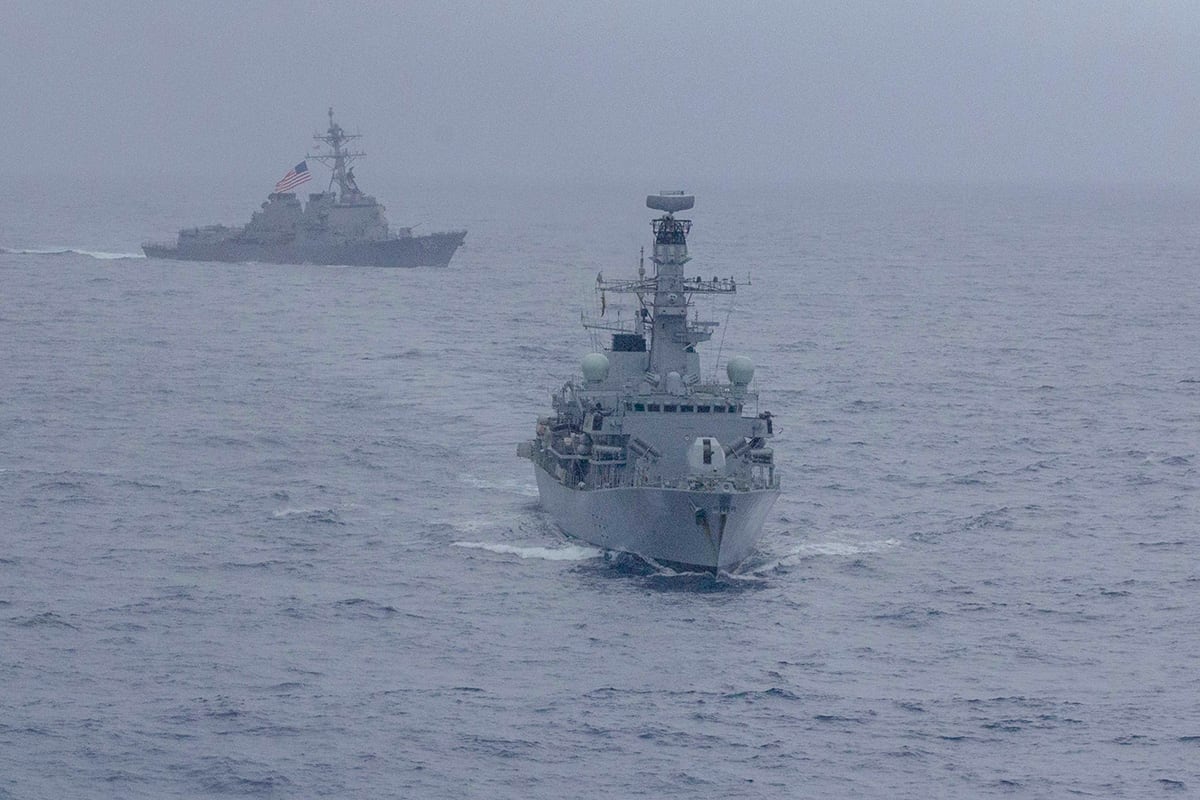LONDON — The head of Britain’s Royal Navy said his service plans to start small and scale up when it comes to autonomous surface vessels.
Adm. Tony Radakin told an audience this month that the Royal Navy isn’t yet planning to pursue large-format unmanned surface vessels on the scale of the United States’ Sea Hunter program.
“We've started using boats to follow an autonomy path,” Radakin said. “I think that feels to me more like the way we will introduce autonomy in terms of our surface ships. Because I think we will need the comfort of a mothership and those supporting boats operating from the mothership, and then I think it will grow in size.”
RELATED

Radakin said the service will follow the commercial sector and take advantage of advancements in autonomous technology developed in the private sector.
“Like much of this, as the civilian community invests in autonomous ships, and we get the reliability, we'll be investing further in that way,” he said.
Forging an unmanned future, however, is going to be key for the Navy, he noted.
“The piece that’s clear to me is the direction of travel,” he said. “And that’s the place where I think, as a Navy, we have to shift and we have to expect to move much more quickly.”
The Royal Navy has launched its NavyX initiative to accelerate introduction of unmanned systems into the fleet. During the DSEI arms fair, the Type 23 frigate Argyll controlled an experimental unmanned version of its rigid-hull inflatable boat, the PAC24, from the Argyll’s combat system.
“This is much more than an autonomous surface vessel demonstration for the Royal Navy,” Cmdr. Sean Trevethan, program director for NavyX, said in a statement. “What we are doing is the first step of exploiting system architecture in a complex warship to integrate an unmanned system into the ship. This ensures the system and its payload fully contribute to the warfighting capability of the ship.
“Ultimately this will change the way we fight, through integrated command and control, and lead to the development of new tactics, techniques and procedures.”
The Royal Navy teamed up with the government-run Defence and Science Technology Laboratory, BAE Systems and L3Harris to work on the program.
NATO commitments
The U.K. was among more than a dozen NATO members to agree in 2018 to work together on the development of maritime unmanned systems aimed at combating the rising threat of Russian submarines and the ever-present threat of mines.
In his speech at DSEI, Radakin pointed to securing the north Atlantic as a top priority for his tenure as first sea lord.
“Securing the North Atlantic is key to ensuring freedom of movement for the nuclear deterrent,” he said. “We need to continue to invest here so we can maintain and extend our advantage and fulfill our commitments to the nation and to our allies.”
RELATED

To that end, those member states are increasingly looking toward unmanned systems. The Sea Hunter program is under development with the idea that it can tow sensors and communicate back with other U.S. Navy assets that can act on gathered intelligence. Other nations are looking at a similar concept of operations for unmanned systems.
NATO staged an exercise off the coast of Portugal that gathers dozens of robot systems for maritime uses, following up on the 2018 commitment.
Exercise REP (MUS) 19 took place Sept. 11-19, according to a NATO news release.
About 800 service members and civilians from the Portuguese Navy, as well as Belgium, Italy, Turkey, Poland, the U.K. and the U.S. are participating in the exercise.
David B. Larter was the naval warfare reporter for Defense News.








